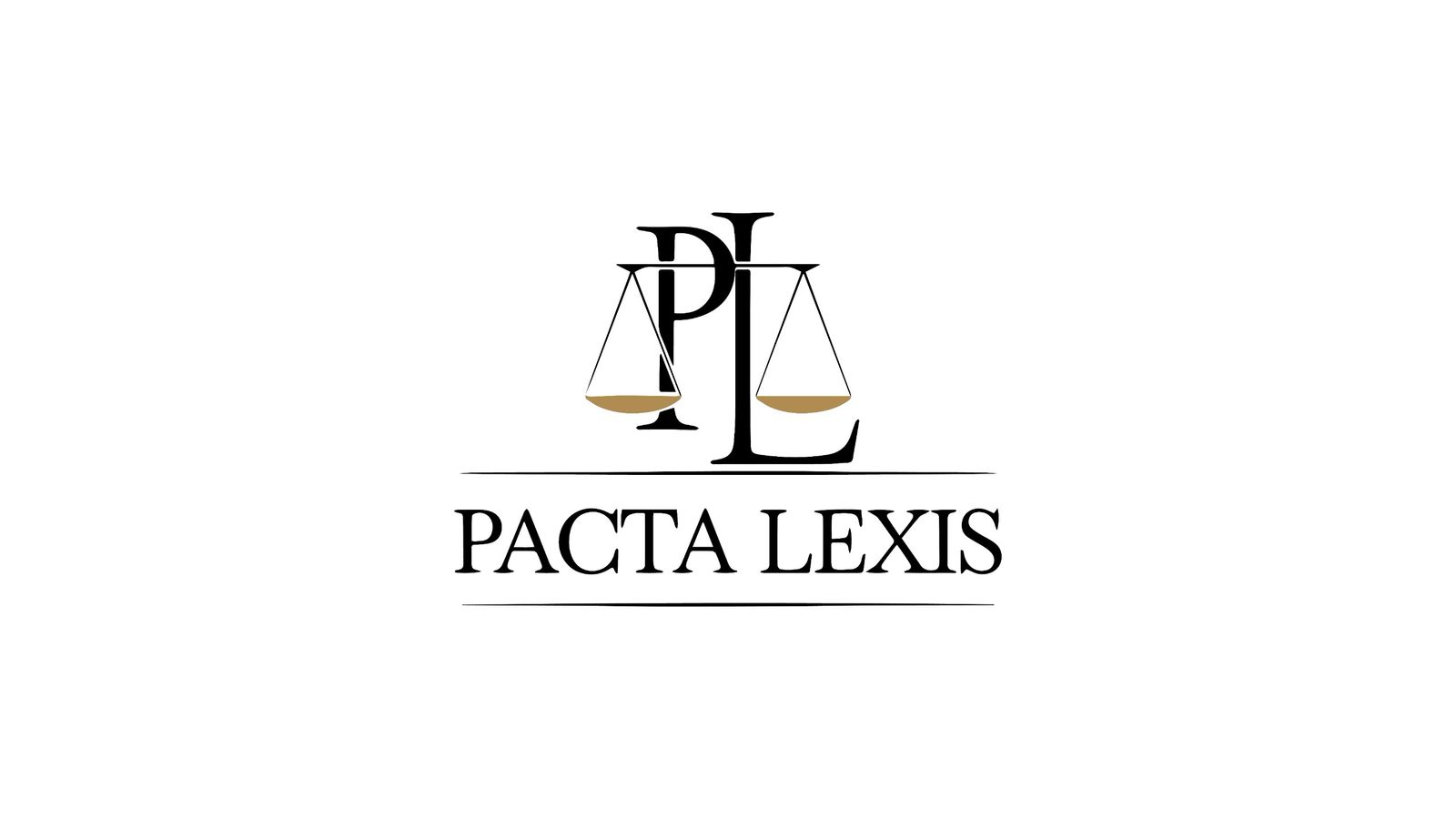Regulating AI in Arbitration: Policy Recommendations for Fairness, Transparency, and Enforceability
Executive Summary
Artificial Intelligence (AI) is increasingly used in international arbitration to assist with document review, legal research, predictive analytics, and even drafting award templates. While AI promises efficiency and cost reduction, there are significant legal and ethical risks: bias, lack of transparency, threats to due process, confidentiality breaches, and uncertainty about enforceability. This brief outlines the current regulatory trends, identifies gaps, and provides policy recommendations to ensure that AI’s integration into arbitration serves justice and maintains legitimacy.
Current Context and Trends
- Increased Use of AI in Arbitration
- A 2025 study, Setting the Boundaries for the Use of AI in Indian Arbitration, explores how AI is being employed in drafting awards and managing procedural work. It highlights concerns around data leakage, algorithmic bias, and enforceability of AI-assisted arbitral decisions. MDPI
- Globally, legal practitioners are experimenting with AI tools but many jurisdictions lack binding rules governing their use.
- Guideline Developments
- Some institutional guidelines are emerging. For example, the “SVAMC Guidelines on the Use of Artificial Intelligence in Arbitration” (China) require participants to understand limitations of AI tools, protect confidentiality, and ensure that decision-making responsibilities remain with human arbitrators. cicc.court.gov.cn
- Confidentiality and AI usage clauses are receiving academic attention, such as in “AI and Confidentiality Protection in International Commercial Arbitration” which calls for explicit contractual provisions regarding data submitted to AI tools and tribunal oversight. SpringerLink
- Legal Reform Movements
- In Pakistan, the Arbitration Law Review Committee has proposed a modern Arbitration Bill (2024) to update old legislation, reduce court interference and strengthen enforcement. This gives a chance to integrate AI regulation proactively into domestic arbitration law. PID+2Dawn+2
Key Legal and Ethical Challenges
- Bias & Fairness: AI systems often rely on historical data which may contain systemic biases (e.g., favoring certain jurisdictions, legal styles). Without audit and oversight, these biases can perpetuate injustice.
- Transparency: If a party uses AI in drafting or analysis, there must be clarity on which tools are used, how decisions or suggestions are generated, and whether the other side had a chance to inspect or contest them.
- Due Process & Party Autonomy: Arbitration depends on party agreement and fairness. If AI recommendations become de facto compulsory, or if parties are pressured to accept AI analyses, this undermines autonomy.
- Confidentiality & Data Protection: Sensitive documents may be uploaded into AI systems; without strong safeguards, there’s risk of data breach or misuse.
- Enforceability: Awards or procedural outcomes heavily influenced by AI tools may face challenges in recognition/enforcement if the tribunal’s procedures are opaque or if a court finds lack of due process.
Comparative Policy & Regulatory Examples
| Jurisdiction/Institution | Key Developments |
| India | The “Setting the Boundaries for the Use of AI in Indian Arbitration” paper suggests guidelines for disclosure of AI use and liability for wrong or misleading AI-generated content. MDPI |
| China | SVAMC Guidelines provide structured rules for AI use in arbitration, including that AI does not replace human decision-making. cicc.court.gov.cn |
| Pakistan | Proposed Arbitration Bill 2024 aims to modernize arbitration law; opportunity exists to incorporate AI regulation in domestic arbitration law. PID+1 |
Policy Gaps
- Many jurisdictions lack mandatory disclosure requirements for AI usage in arbitration.
- There is generally no uniform standard for auditing AI tools used in arbitration.
- Few legal frameworks address liability if AI assists but leads to flawed or biased outcomes.
- Confidentiality clauses often do not explicitly cover AI-generated or AI-processed outputs.
- Courts may be unprepared to assess fairness/enforcement if AI played a significant role in arbitration proceedings.
Policy Recommendations
- Mandatory Disclosure of AI Use
- Arbitrators/parties should be obliged to disclose any AI tools used (name/version), how they are used (e.g., for research, drafting), and settings or parameters relevant to the tool.
- Standard Guidelines for AI in Arbitration
- Develop uniform guidelines modeled on best practices, e.g., SVAMC, India proposals, for transparency, fairness, and confidentiality.
- Audit and Oversight Mechanisms
- Introduce third-party audit or verification of AI systems used in arbitration to detect bias or errors.
- Contractual Clauses Addressing AI
- Arbitration agreements should include clauses governing AI use, confidentiality, data protection, human oversight, and liability for errors.
- Enforcement & Judicial Training
- Courts and enforcement authorities should develop capacity to assess the propriety of AI’s role in an arbitration when validating or setting aside awards.
- Data Protection Laws Harmonization
- Ensure that AI use complies with applicable national/international data protection laws (e.g., GDPR in Europe).
- Ethical Frameworks & Party Consent
- Parties should give informed consent to AI usage. Arbitrators must ensure that AI tools do not substitute human decision-making.
Implications for Stakeholders
- Arbitrators & Institutions will need to update institutional rules/procedures, train arbitrators on AI literacy, and adapt panels to include technical or AI-knowledgeable members.
- Legislators have an opportunity (as seen in Pakistan) to integrate AI regulation into upcoming arbitration laws.
- Law Firms & Parties will need to develop internal policies regarding AI use to protect client confidentiality and avoid risk.
- Courts & Enforcement Bodies must be prepared to scrutinize procedural fairness where AI played a role, including challenges to enforceability.
Conclusion
AI’s integration into international arbitration is advancing rapidly and carries both promise and risk. Without adequate regulation, the legitimacy of arbitration could suffer. On the other hand, properly governed, AI can enhance efficiency, reduce cost, and broaden access to justice.
Policymakers and legal institutions should act now to establish clear standards and legal frameworks. This will ensure that arbitration remains a trusted, fair, and vibrant mechanism in a digital age.
References
- “Setting the Boundaries for the Use of AI in Indian Arbitration,” Eng. Proc. 2025, 107(1), 39. MDPI
- “SVAMC Guidelines on the Use of Artificial Intelligence in Arbitration” (China). cicc.court.gov.cn
- “AI and Confidentiality Protection in International Commercial Arbitration: Analysis of the existing legal framework.” SpringerLink
- “Arbitration Law Review Committee / Bill 2024 – Pakistan”. PID+1
Legal Policy Brief
Title: Cross-Border Mediation and the Singapore Convention: Opportunities and Challenges for Global Enforcement
Executive Summary
The Singapore Convention on Mediation (2019) marked a watershed moment for international dispute resolution by providing a harmonized framework for the enforcement of mediated settlement agreements across borders. With over 55 signatories and ratifications from major jurisdictions, the Convention promises to elevate mediation as a preferred dispute resolution method. However, adoption remains uneven, and practical challenges around enforcement, cultural perceptions of mediation, and interaction with existing arbitration frameworks persist. This policy brief examines these issues and provides recommendations for governments, institutions, and practitioners.
Current Context
- The Singapore Convention on Mediation (2019):
- Offers enforceability of international mediated settlements, akin to the New York Convention (1958) for arbitration.
- Designed to reduce reliance on litigation and arbitration for cross-border disputes, particularly in commercial matters.
- Global Ratification Status:
- As of 2025, 57 states have signed the Convention, and 14 have ratified, including Singapore, Fiji, Qatar, Belarus, and Saudi Arabia.
- Key jurisdictions such as the EU and the US remain hesitant to ratify, slowing its global reach.
- Institutional Adoption:
- International Chamber of Commerce (ICC) and UNCITRAL are actively promoting mediation frameworks, while ODR platforms integrate Singapore Convention provisions into digital settlement processes.
Legal and Practical Challenges
- Limited Ratification: Many trade-heavy jurisdictions (e.g., the US, India, EU bloc) have not ratified, weakening the Convention’s universality.
- Cultural Barriers: In some regions, mediation is seen as a “soft” or less authoritative process compared to arbitration, affecting uptake.
- Interaction with Arbitration: Businesses accustomed to arbitration may hesitate to rely solely on mediation, especially where enforceability remains uncertain.
- Judicial Interpretation: Early enforcement cases will set precedents; lack of clarity on court involvement in settlement enforcement could create inconsistencies.
Comparative Insights
| Jurisdiction | Approach to Mediation Enforcement |
| Singapore | Fully ratified; courts are supportive of mediated settlements. |
| Qatar & Saudi Arabia | Ratified quickly to bolster status as international dispute hubs. |
| EU | Still deliberating; some members rely on the EU Mediation Directive instead. |
| India | Passed Mediation Bill 2023 but has not ratified the Singapore Convention. |
Policy Recommendations
- Promote Ratification Among Trade Partners
- Governments should prioritize ratification to build predictability in cross-border commerce.
- Judicial Training
- Courts must be trained on handling mediated settlement enforcement, ensuring uniform application.
- Hybrid Models (Med-Arb)
- Encourage adoption of med-arb mechanisms that combine mediation flexibility with arbitration enforceability.
- Institutional Capacity Building
- Law firms and chambers should train mediators with cross-cultural competence and digital mediation skills.
- Public Awareness Campaigns
- Businesses must be educated on mediation’s efficiency and enforceability under the Convention.
Implications for Stakeholders
- Businesses: Lower transaction costs and faster resolution if the Convention is widely adopted.
- Law Firms: Expansion of mediation practices and advisory services.
- Governments: Ratification could improve investment climate by demonstrating commitment to efficient dispute resolution.
Conclusion
The Singapore Convention is a milestone in elevating mediation as a trusted mechanism for cross-border dispute resolution. To realize its potential, ratification must accelerate, institutional support must deepen, and cultural perceptions of mediation must evolve. With proper implementation, the Convention can reshape international dispute resolution by creating a global enforcement mechanism for consensual settlements.
References
- UNCITRAL, Singapore Convention on Mediation (2019): UNCITRAL.org
- Nadja Alexander & Shouyu Chong, The Singapore Convention on Mediation: A Framework for the Cross-Border Recognition of Mediated Settlements (Kluwer, 2020).
- Ministry of Law, Singapore: “Status of Ratification – Singapore Convention” (2025 update).
- Indian Ministry of Law, Mediation Bill 2023.
Legal Policy Brief
Title: Cybersecurity and Data Protection in International Arbitration: Policy Imperatives
Executive Summary
International arbitration increasingly relies on digital communication, online document management, and virtual hearings. While these innovations enhance efficiency, they also introduce significant cybersecurity and data protection risks. Breaches of confidentiality, cyberattacks on arbitration platforms, and inadequate data handling protocols can undermine trust in the arbitral process and raise legal liability issues. This brief examines current challenges, evaluates regulatory frameworks, and proposes policy measures to strengthen cybersecurity and data protection in international arbitration.
Current Context
- Digital Transformation in Arbitration
- Virtual hearings, cloud-based case management systems, and digital submission platforms have become standard, especially post-COVID-19.
- Online Dispute Resolution (ODR) platforms, such as those endorsed by UNCITRAL, handle high volumes of low-value international claims efficiently.
- Cybersecurity Threats
- Document leaks, phishing attacks targeting arbitrators or parties, and ransomware attacks on arbitration institutions.
- Data integrity risks during transmission or storage of sensitive financial, technical, or personal information.
- Legal Frameworks
- General Data Protection Regulation (GDPR, EU, 2018): Applies to arbitration institutions and parties processing personal data of EU citizens.
- UNCITRAL Technical Notes on ODR (2016): Provide guidelines for secure electronic dispute resolution.
- ISO/IEC 27001 Standards: Increasingly recommended for data management systems in arbitration.
Challenges
- Cross-Border Jurisdictional Conflicts: Differing data privacy laws (e.g., GDPR in EU vs. CLOUD Act in the US) create compliance challenges.
- Institutional Preparedness: Not all arbitration institutions have robust cybersecurity protocols or mandatory risk assessments.
- Awareness and Training: Arbitrators and counsel may lack sufficient knowledge of cyber risks and data protection obligations.
- Confidentiality vs. Accessibility: Digital platforms may improve access but complicate the duty of confidentiality and privilege protections.
Comparative Insights
| Jurisdiction / Institution | Key Measures |
| ICC International Court of Arbitration | Introduced guidelines on confidentiality and digital submissions; recommends encryption and secure portals. |
| SIAC (Singapore) | Mandates cybersecurity protocols for case management and virtual hearings. |
| UNCITRAL | Technical Notes highlight secure electronic communication and identity verification. |
| European Union | GDPR imposes strict requirements on storage, transmission, and processing of personal data, with severe penalties for breaches. |
Policy Recommendations
- Mandatory Cybersecurity Protocols for Arbitration Institutions
- All arbitral bodies should implement ISO 27001-compliant systems and conduct regular vulnerability assessments.
- Arbitrator and Counsel Training
- Mandatory cybersecurity training for arbitrators and legal counsel, emphasizing phishing, ransomware, and secure digital document handling.
- Data Protection Clauses in Arbitration Agreements
- Explicit clauses specifying jurisdiction, data processing standards, and responsibilities for all parties, including third-party service providers.
- Incident Response and Reporting Mechanisms
- Establish a formal protocol for reporting breaches to relevant authorities while protecting confidentiality obligations.
- Cross-Border Legal Harmonization
- Promote international guidelines or treaties on arbitration-related data protection to resolve conflicts between different national frameworks.
- Risk Assessment Prior to ODR or Virtual Hearings
- Parties and institutions should conduct pre-hearing risk assessments, including testing secure portals, verifying identity, and encrypting communications.
Implications for Stakeholders
- Arbitrators: Must ensure procedural integrity by safeguarding electronic evidence and sensitive communications.
- Parties and Counsel: Responsible for compliance with applicable data protection laws and securing internal systems.
- Arbitration Institutions: Need to invest in secure platforms, adopt mandatory cybersecurity policies, and offer guidance to participants.
- Regulators: May consider issuing sector-specific rules governing electronic arbitration and virtual proceedings.
Conclusion
Cybersecurity and data protection are no longer peripheral concerns in international arbitration—they are central to procedural fairness, trust, and enforceability of awards. Harmonized regulatory standards, robust institutional policies, and mandatory training for all participants are necessary to mitigate risks and preserve the integrity of the arbitral process. Arbitration’s global relevance depends on its ability to adapt to the digital era securely.
References
- UNCITRAL, Technical Notes on Online Dispute Resolution (2016): UNCITRAL.org
- European Union, General Data Protection Regulation (GDPR), Regulation (EU) 2016/679
- ICC, Guidelines for Arbitration in the Digital Era (2022 update)
- ISO/IEC 27001:2013, Information Security Management Standards
- SIAC, Cybersecurity Protocols for Arbitration (2021)
Legal Policy Brief
Title: Artificial Intelligence in Dispute Resolution: Legal, Ethical, and Regulatory Considerations
Executive Summary
Artificial Intelligence (AI) is transforming dispute resolution by automating legal research, drafting awards, predicting case outcomes, and streamlining administrative functions. While AI improves efficiency and accessibility, it raises legal, ethical, and procedural concerns. Questions about bias, transparency, accountability, and enforceability are increasingly urgent as AI tools are embedded in arbitration and mediation platforms worldwide. This brief examines the current landscape, identifies challenges, and provides policy recommendations for regulating AI in international dispute resolution.
Current Context
- AI in Arbitration and Mediation
- AI tools assist with document review, e-discovery, predictive analytics, virtual mediation sessions, and award drafting.
- Institutions such as the Singapore International Arbitration Centre (SIAC) and UNCITRAL-supported ODR platforms are experimenting with AI to increase efficiency in high-volume disputes.
- Regulatory Developments
- UNCITRAL Technical Notes on ODR (2016): Highlight the use of automated systems in dispute resolution while emphasizing due process.
- SVAMC Guidelines (China): Recommend human oversight in AI-assisted arbitration to ensure decision-making remains accountable and transparent.
- European Commission AI Act (Draft, 2024): Suggests that AI systems used in judicial and administrative processes must be high-risk compliant, audited, and explainable.
- Industry Adoption
- Law firms are increasingly integrating AI-powered contract review and case analysis platforms.
- ODR platforms are piloting AI negotiation assistants that suggest settlement options based on historical trends.
Key Legal and Ethical Challenges
- Bias and Fairness:
AI systems are trained on historical data, which may embed systemic biases. Unchecked, AI could reproduce discrimination in dispute outcomes. - Transparency and Explainability:
Parties must understand how AI tools generate recommendations or predictions. Black-box AI may undermine trust and challenge enforceability. - Autonomy and Consent:
Parties must have the ability to accept, reject, or challenge AI-generated recommendations. Overreliance could compromise voluntary agreement in mediation. - Accountability:
Determining liability is complex when AI-generated outputs influence decisions. Arbitration institutions, parties, and software providers all share potential responsibility. - Confidentiality and Data Protection:
Sensitive documents processed by AI may face unauthorized exposure. Jurisdictional differences in data protection law (GDPR, local privacy laws) complicate compliance.
Comparative Insights
| Jurisdiction / Institution | AI Governance Approach |
| EU | AI Act (Draft) categorizes AI in judicial or dispute resolution as high-risk; requires transparency and auditability. |
| China (SVAMC Guidelines) | AI can assist but cannot replace human decision-making; parties must be informed. |
| India | Academic studies suggest disclosure obligations for AI usage; no binding regulations yet. |
| UNCITRAL-supported ODR | Encourages transparency, party consent, and human oversight in automated dispute resolution. |
Policy Recommendations
- Mandatory Disclosure of AI Use
- Parties and arbitrators must disclose any AI tools used, including purpose, type, and limitations.
- Human Oversight
- AI tools should augment, not replace, human decision-making. Arbitrators must retain final authority.
- Bias Audits and Explainability
- AI systems should undergo independent audits for bias and be explainable to parties.
- AI-Specific Arbitration Clauses
- Agreements should include clauses covering AI usage, data protection, consent, liability, and auditing.
- Cross-Border Regulatory Harmonization
- Establish international guidelines to reconcile differing data protection, AI, and arbitration laws.
- Training and Capacity Building
- Arbitrators, mediators, and legal counsel must be trained in AI literacy, ethical considerations, and cybersecurity.
Implications for Stakeholders
- Arbitration Institutions: Must adopt AI policies, safeguard confidentiality, and ensure transparency.
- Law Firms and Counsel: Should implement internal compliance and ethical frameworks for AI-assisted work.
- Parties: Must understand AI’s role, limitations, and risks in dispute resolution.
- Regulators: Should provide guidance on AI integration in arbitration to protect fairness, enforceability, and public trust.
Conclusion
AI has the potential to revolutionize dispute resolution by improving efficiency and accessibility. However, unchecked or opaque AI use risks bias, unfairness, and procedural invalidity. To harness AI responsibly, regulatory frameworks, institutional policies, and ethical standards must evolve. Harmonized international guidance and mandatory disclosure, coupled with human oversight, are essential to ensure AI strengthens rather than undermines justice.
References
- UNCITRAL, Technical Notes on Online Dispute Resolution (2016): https://uncitral.un.org/en/texts/odr
- European Commission, Artificial Intelligence Act (Draft 2024): https://digital-strategy.ec.europa.eu/en/library/proposal-regulation-laying-down-harmonised-rules-artificial-intelligence
- SVAMC Guidelines on AI in Arbitration (China): https://cicc.court.gov.cn
- Eng. Proc. 2025, 107(1), 39. “Setting the Boundaries for the Use of AI in Indian Arbitration”: https://www.mdpi.com/2673-4591/107/1/39
Legal Policy Brief
Title: Migration Laws and Geopolitical Challenges: Policy Recommendations for Protecting Refugees and Cross-Border Migrants
Executive Summary
Migration and displacement are increasingly shaped by geopolitical crises, conflict, climate change, and economic instability. International legal frameworks provide protections for refugees and cross-border migrants, but enforcement gaps, inconsistent national policies, and politicization of migration impede effective implementation. This brief examines contemporary challenges, evaluates existing legal instruments, and proposes policy measures to harmonize migration governance while upholding human rights.
Current Context
- Global Migration Trends
- According to UNHCR (2025), over 110 million people are displaced worldwide, including refugees, asylum seekers, and internally displaced persons.
- Conflicts in Ukraine, Afghanistan, Syria, and Africa have triggered mass displacement, creating urgent demands for cross-border legal protections.
- International Legal Frameworks
- 1951 Refugee Convention & 1967 Protocol: Define refugee status, rights, and obligations of states.
- Global Compact for Safe, Orderly, and Regular Migration (GCM, 2018): Provides a non-binding framework for cooperative migration governance.
- Regional Instruments:
- EU’s Dublin Regulation regulates asylum applications among member states.
- African Union’s Kampala Convention protects internally displaced persons.
- National Implementation Challenges
- States vary widely in defining refugee status, eligibility for protection, and procedural safeguards.
- Migrant rights are often subordinated to security and border control priorities.
- Climate-induced migration is largely unaddressed under existing refugee frameworks.
Key Legal and Policy Challenges
- Non-Uniform Application of Refugee Law: Different criteria for asylum and protection create “protection gaps.”
- Border Security vs. Human Rights: States prioritize security over obligations to provide asylum, leading to pushbacks and detention.
- Climate Migration: Existing legal instruments do not recognize climate-displaced persons, leaving millions without protection.
- Forced Returns and Statelessness: Lack of documentation and legal status creates risks of statelessness or deportation to unsafe areas.
- Geopolitical Tensions: Migration flows are often politicized, affecting humanitarian access and international cooperation.
Comparative Insights
| Region / Jurisdiction | Approach to Migration Law |
| European Union | Dublin Regulation, Temporary Protection Directive for Ukrainian refugees (2022), challenges with uneven burden-sharing. |
| Pakistan | Host to over 1.5 million Afghan refugees; Refugee Act not yet fully enacted, relies on executive arrangements and UNHCR guidance. |
| United States | Asylum policies subject to frequent changes; “Title 42” pandemic-related restrictions highlighted tension between health, security, and human rights. |
| African Union | Kampala Convention recognizes rights of internally displaced persons; implementation varies by member state. |
Policy Recommendations
- Harmonization of Refugee and Migrant Laws
- Encourage states to adopt consistent refugee status determination procedures and non-refoulement principles.
- Integration of Climate Migration Protections
- Amend national and regional legal frameworks to recognize and protect climate-displaced persons.
- Strengthen International Cooperation
- Regional burden-sharing arrangements, enhanced collaboration with UNHCR and IOM, and standardized cross-border procedures.
- Human Rights-Based Border Management
- Ensure border enforcement practices comply with international human rights obligations, minimizing detention and forced returns.
- Capacity Building for Legal and Humanitarian Institutions
- Train immigration officers, judges, and lawyers on international refugee law and human rights standards.
- Digital Documentation and ID Systems
- Implement secure digital identity systems for refugees and migrants to prevent statelessness and facilitate access to services.
Implications for Stakeholders
- States: Must balance border management with international legal obligations; proactive legal frameworks improve compliance and reduce protection gaps.
- International Organizations: Provide technical, legal, and humanitarian support; monitor compliance and coordinate emergency response.
- Civil Society & NGOs: Advocate for protection, monitor human rights violations, and support legal aid for migrants.
- Legal Practitioners: Key role in strategic litigation, policy advising, and drafting national legislation aligned with international obligations.
Conclusion
Migration is a defining challenge of the 21st century, intertwined with geopolitics, conflict, and climate change. Effective protection for refugees and cross-border migrants requires harmonized laws, international cooperation, and proactive policy interventions. Strengthening legal frameworks and integrating climate and human rights considerations will ensure migration management protects both state interests and human dignity.
References
- UNHCR, Global Trends: Forced Displacement in 2025, https://www.unhcr.org/statistics
- UN, Global Compact for Safe, Orderly and Regular Migration, 2018: https://www.un.org/en/global-compact-migration
- African Union, Kampala Convention for the Protection and Assistance of Internally Displaced Persons, 2009: https://au.int/en/treaties/kampala-convention
- European Commission, Dublin Regulation & Temporary Protection Directive, 2022 update.
- Pakistan Ministry of States & Frontier Regions (SAFRON), Afghan Refugee Policy, 2023.














